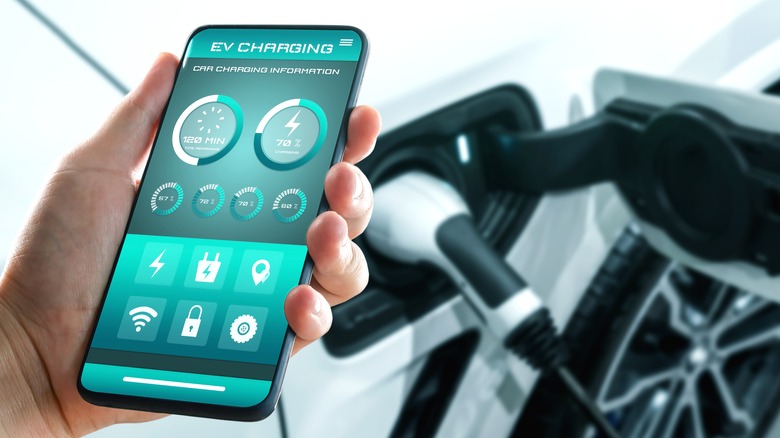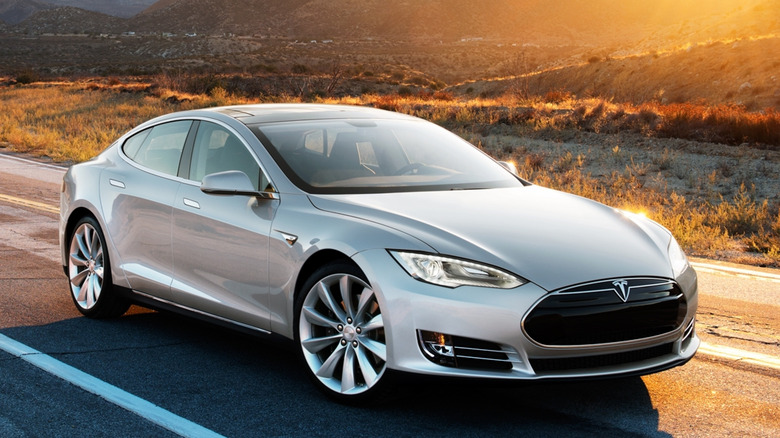The Reason We Don't Have Solar-Powered Cars Yet
The solar energy and EV markets are both growing rapidly, and so it seems logical — on the surface, at least — to merge the two technologies by building solar-powered cars. That idea isn't new and we've seen some concepts based on it over the years, yet such vehicles still aren't found on the market. Why? The science and numbers just don't add up, sadly. Many solar-powered car concepts feature very impractical designs and, in order to maximize power generation, they're basically large solar panels on wheels.
In the years following the earliest concepts, automakers have made some progress in adding solar panels to cars without compromising design. Companies like Mercedes-Benz with its concept Vision EQXX and Hyundai with its hybrid Sonata are leveraging solar cells embedded in the roofs of cars, for example — and, of course, they're not the only ones with such innovations related to EVs. With that said, the solar roofs on these modern all-electric vehicles are not powering the full ride; they are only there to give the battery an extra boost and they may remain nothing more than a novelty for years to come.
What the science says about solar-powered cars
In June 2021, Engineering Explained published a video revealing that despite the 173 trillion kilowatts of power that hit the Earth every hour, solar-powered cars are still far from being a reality. Engineering Explained used the Tesla Model 3 for its example, showing that if the vehicle's roof was equipped with solar cells, it would only realistically produce around 1.5 kilowatts of power. This would enable the vehicle to drive endlessly at a maximum speed of just 12 miles per hour. At that rate, the battery would take 8.3 days (200 hours) to fully charge if parked in perfect sun conditions.
The problem with solar energy is that much of it is lost along the way. For example, only 55% of the energy from the sun makes it to the Earth's surface; the rest is lost, reflected, or absorbed by the atmosphere. Another major loss of energy efficiency occurs during solar cell technology operation. By 2022, solar panel efficiency ranges from 20% to 25% max. Other factors such as nighttime, cloud coverage, and equator or pole inclinations can dramatically affect power generation.
Of all these factors, only solar cell technology can be improved. The U.S. Department of Energy explains that conversion efficiency is the percentage of the solar energy that shines on a device and is converted into usable electricity. A study published in "Progress in Photovoltaics" reveals that significant improvements to the technology have been made since 1941 when solar panels only had a 1% energy efficiency. However, the science shows that until significant breakthroughs are achieved in solar energy conversion, solar-powered cars will be nothing but a dream.

